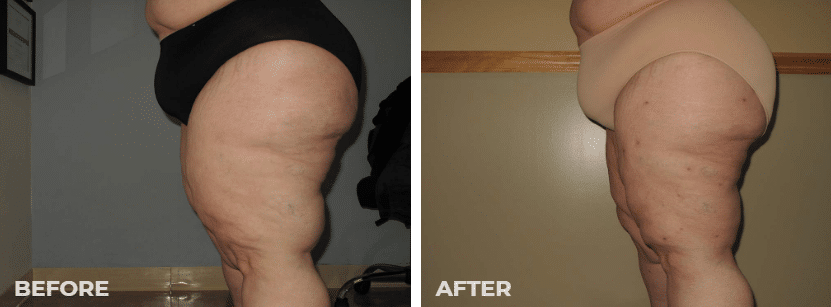While liposuction has become a common household term over the past several decades, an article published by Dr. Adam Ali in the British Medical Journal in October of 2017 brought the dangers of fat embolisms as they are associated with liposuction into the spotlight. The article covered the development of Fat Embolisms Syndrome in a patient with lipedema who had liposuction performed on both lower legs and knees.
While a rare scenario, the article was a reminder to the greater public that liposuction is a surgical procedure that comes with inherent risks. The potential for patients to develop fat embolisms as a result of undergoing liposuction should serve as a reminder that this procedure requires a dedicated effort to reduce any and all associated risks in order to be successful.

Fat Embolisms Syndrome
An embolism occurs when a mass dislodges internally and travels through the bloodstream, blocking vital access to major arteries or organs. Fat embolisms syndrome refer specifically to one or multiple fat globules that have broken off and are pushed through blood vessels that are too small to accommodate these masses. The fat masses ultimately become lodged in the vessels resulting in serious side effects or even death. Fat embolisms can be the primary factor in respiratory failure if the masses become lodged in vessels serving the lungs.
Causes Contributing To The Development Of Fat Embolisms
There are many conditions that could cause the development of fat embolisms, but a few are consistently pointed to as primary factors. Oftentimes, fat embolisms occur when fat escapes into the bloodstream due to traumatic injuries. These may include long bone breaks or pelvic fractures that allow bone marrow to seep into the body. Soft tissue damage has been linked to the development of fat embolisms along with patients who have experienced serious burns injuries.
While rare, the development of fat embolisms can occur during a liposuction procedure. Normally, this happens with high volume procedures where more than 5-liters of fat are being removed from a patient and the use of a cannula with a larger diameter is required. Similarly, fat embolisms have been known to develop in patients that undergo fat transfer procedures. This can happen when fat globules being injected are too large for the patient’s blood vessels or when the injection is performed at a moment other than when the cannula is being withdrawn from the body.

Risk of Fat Embolism for Patients with Lipedema
Liposuction in St. Louis, MO is a generally safe procedure, however, any treatment that requires invasive techniques comes with inherent risk. While these risks apply to any patient undergoing liposuction, the potential for complications is often greater for patients who suffer from lipedema. It has been shown that the presence of varicose veins in patients increases the overall risk of bleeding, DVT and embolism. Often, patients with lipedema have higher than average subcutaneous fat counts as well as higher body mass index. For physicians treating patients with this condition, a cannula with a large diameter is required to successfully perform the procedure. When more than 5-liters of fat is removed using a more invasive cannula, the risk of complications goes up significantly. Finally, it is widely recognized that the use of general anesthesia increases the risk of complications as it relates to surgery in general. General Anesthesia can lead to temporary cardiac or circulatory depression which results in an increased risk of embolism.
Preventing the Development of Fat Embolisms
Understanding the higher risk factor linking patients suffering from lipedema and liposuction procedures allows patients to take the necessary preventative measures to help keep fat embolisms from developing. A conversation between the patient and physician concerning the approach to be used during the procedure is imperative. Lymph sparing techniques are a frequently successful option for minimizing injury and risk. While not applicable under general anesthesia, these techniques are worth discussing. Strategies may include utilizing a cannula with a smaller diameter or mapping out lymphatic collecting ducts and channels to promote and maintain optimum circulation both during and after the procedure.
Trusting and working closely with the attending physician should put a patient’s mind at ease. A dedicated surgeon will have a plan in place for helping patients handle treatment in the event the procedure does lead to the development of fat embolisms. Procedures for oxygenating arteries should be mapped out prior to surgery and fluid intake will generally be limited. Diuretics are a common solution as a method of minimizing the accumulation of fluid in the lungs.
Liposuction In St. Louis MO
For additional information on surgical risks such as fat embolisms and how those risks can be reduced for a procedure you may be interested in, be sure to schedule your initial consultation at the Laser Lipo and Vein Center with Dr. Wright. Experienced, caring and dedicated to your safety, patients will find a comprehensive approach helps them understand their options every step of the way.